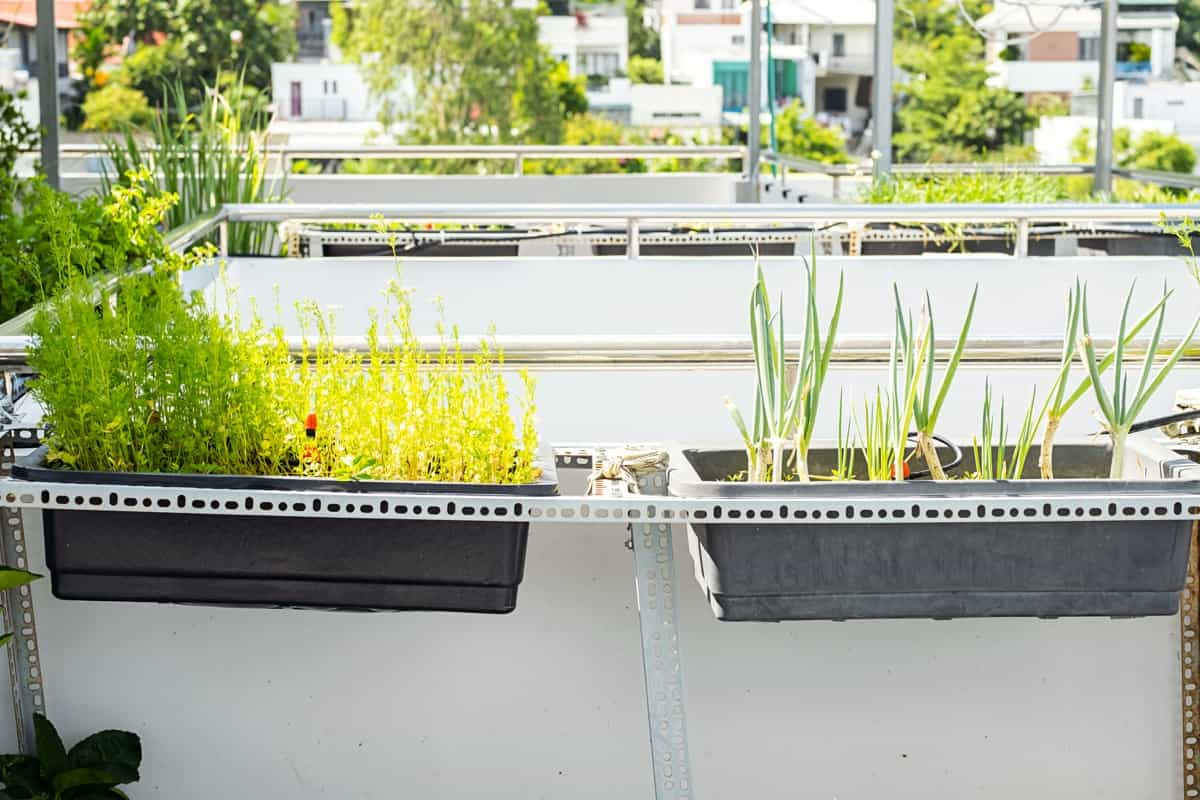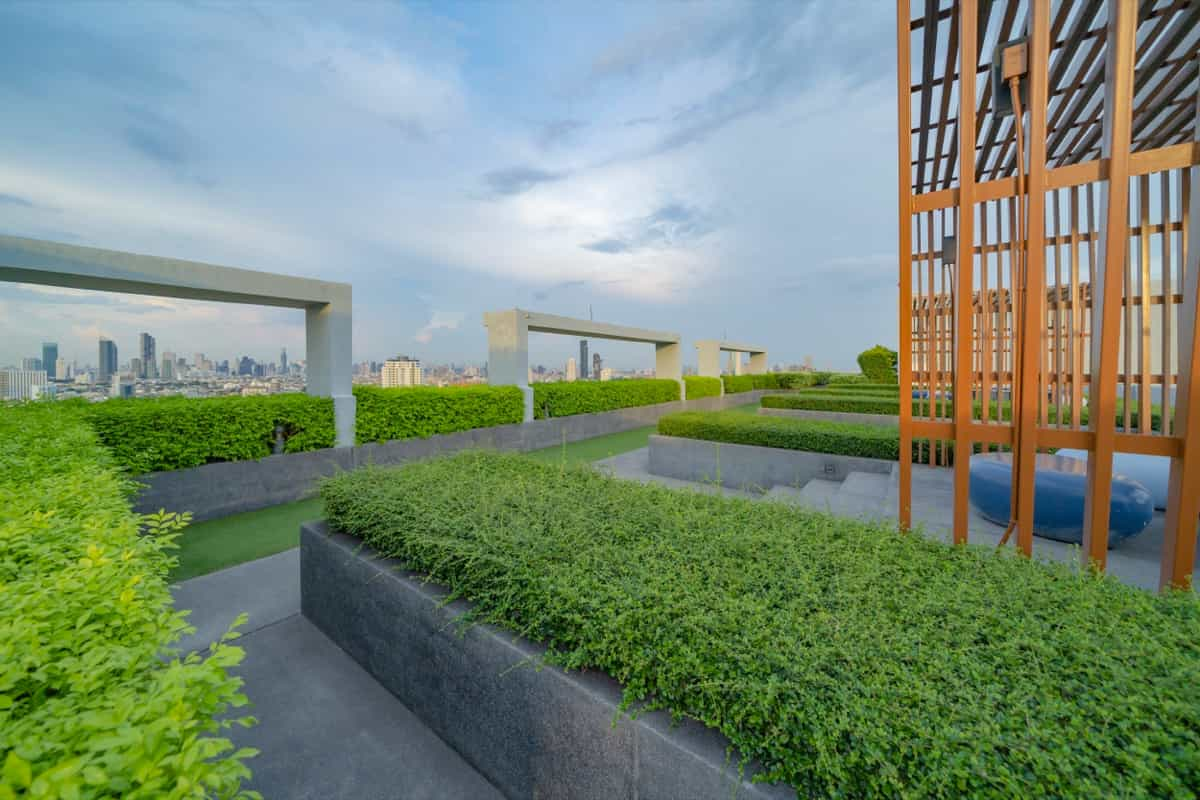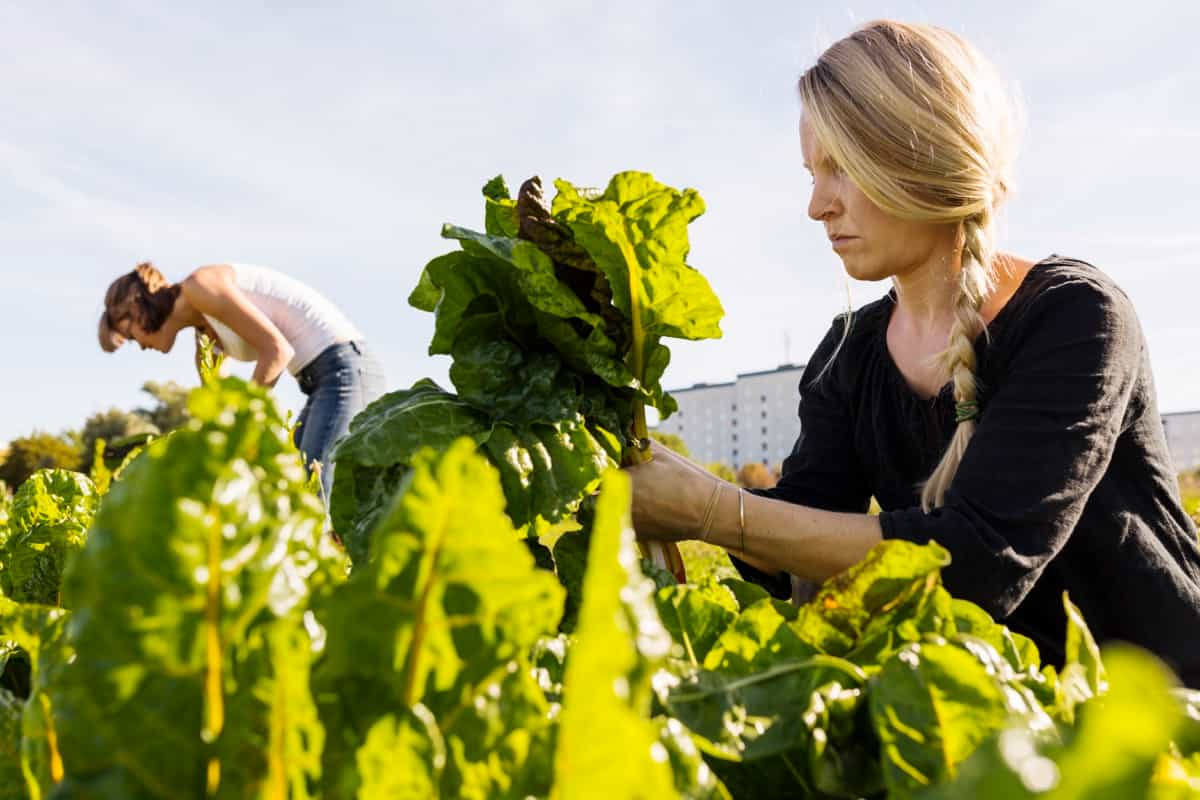Terrace garden design refers to the art and science of creating a garden on a terrace or rooftop space. It involves carefully planning and arranging various elements such as plants, seating areas, water features, lighting, and more to utilize the available space effectively while also enhancing its aesthetic appeal. In Indian gardens specifically, terrace garden design holds even greater significance due to the limited availability of open spaces in densely populated cities.

Terrace Garden Design and Layout
Understand the Climate and Microclimate of India
India is known for its diverse climate and microclimates, which greatly influence the success of a terrace garden. The first step in understanding the climate of India is to recognize the four main seasons: winter, summer, monsoon, and post-monsoon. Each season brings its own set of challenges and opportunities for gardening.
For example, during the hot summers, it’s important to choose heat-tolerant garden plants that can withstand high temperatures. Microclimates also play a significant role in garden design. These localized climate conditions are determined by factors such as sunlight exposure, wind patterns, and nearby structures. Additionally, consider the region-specific weather patterns within India.
Select Suitable Plants for Indian Terrace Gardens
The choice of plants will depend on various factors such as the climate, microclimate, and available space. In India, where temperature levels can soar during summers and drop significantly in winters, it’s important to choose plants that are adaptable to these extreme conditions. Drought-tolerant plants like succulents and cacti are ideal for terrace gardens as they require less water and can withstand heat.
Furthermore, considering the limited space in terrace gardens, vertical gardening methods can be employed to maximize greenery. Hanging baskets or wall-mounted planters filled with herbs or flowering vines not only add beauty but also save valuable floor space. Native Indian plants like Jasmine, Hibiscus, and Bougainvillea are popular selections for their vibrant colors and fragrance.
In case you missed it: 10 Best Winter Flowers for Indian Gardens: Add Elegance with These Easy-Growing Winter Flowers

Additionally, incorporating edible plants like Tomatoes, Chili Peppers, or herbs like Mint and Coriander adds functionality to the garden while providing fresh produce for culinary endeavors. It’s important to consider maintenance requirements when selecting suitable plants for an Indian terrace garden.
Incorporate Traditional Indian Elements in Garden Design
One way to incorporate traditional elements is by using vibrant colors inspired by Indian textiles or artwork. Another element to consider is incorporating statues or sculptures of deities like Ganesha or Krishna. These divine figures not only add beauty but also bring blessings and positive energy to your terrace garden.
Using traditional patterns in flooring or wall designs can also enhance the overall look of your garden. Don’t forget about plants that have cultural significance in India. Tulsi (holy basil), Marigold Flowers, Jasmine Vines, and Neem trees are just a few examples that can add both beauty and symbolism to your terrace garden.
Maximize Space in Small Terrace Gardens
An effective way to maximize space is by incorporating vertical gardening techniques. By utilizing walls, trellises, or hanging planters, add greenery without taking up valuable floor space. Another tip for maximizing space is to choose plants that are compact and have a vertical growth habit. Choose dwarf varieties or those that can be trained into special patterns against walls or fences.
Additionally, consider using multi-functional furniture and storage solutions in your terrace garden design. Utilizing reflective surfaces such as mirrors or glass panels can also create an illusion of more space in small terrace gardens.
Implement Sustainable Practices
By adopting sustainable practices, you can reduce waste, conserve water, and create a more resilient and self-sufficient garden. The main way to implement sustainability is by using organic fertilizers and pesticides. Avoid chemical-based products that can disrupt the natural balance of your garden ecosystem.
Instead, choose natural alternatives such as compost, manure, or homemade pest repellents. Composting kitchen scraps reduces landfill waste and provides nutrient-rich soil amendments for your terrace garden. Incorporate companion planting techniques to naturally control pests without resorting to chemical interventions.
Utilize Vertical Gardening Techniques
Vertical gardening involves growing plants vertically, using structures such as trellises, hanging baskets, or wall-mounted planters. This not only adds visual interest to your garden but also allows you to grow more plants in a smaller area. The popular technique for vertical gardening is the use of living walls or green walls. These are essentially vertical gardens attached to a structure like a wall or fence.
In case you missed it: Credit and Loan Subsidies for Indian Farmers: Agriculture Financial Support from Indian Government

By planting cascading vines, colorful flowers, and even herbs and vegetables in modular containers or pockets on the wall, you can make a stunning display while saving floor space. Another option for vertical gardening is the use of trellises. These structures provide support for climbing plants like Ivy, Jasmine, or Passionflower. Hanging baskets are another way to utilize vertical gardening techniques.
Create a Relaxing and Serene Ambiance with Water Features
The popular option for adding water features is by installing a cascading waterfall. This not only adds elegance to your garden but also creates a calming effect as you listen to the gentle flow of water. You can select from various designs and sizes that suit your taste and space availability. Another option is to include a small pond adorned with floating plants and colorful fish. If you have limited space, consider incorporating tabletop fountains or wall-mounted water features. These compact options still provide the same sense of calmness without taking up too much room.
Design Functional Seating Areas in Terrace Gardens
These seating areas enhance the aesthetic appeal of your garden and also provide a comfortable space for you to enjoy the outdoors. When designing seating areas in your terrace garden, it is important to consider the available space and layout. Choose furniture that is both practical and visually pleasing.
Choose weather-resistant materials such as teak or wrought iron that can withstand different climatic conditions. To make the most of small terrace gardens, incorporate multi-functional furniture pieces. This will help maximize space while still providing ample seating options.
Integrate Lighting for Evening Enjoyment
Different activities call for different types of lighting. For dining areas, consider installing pendant lights or stringing fairy lights overhead to create a warm and inviting atmosphere. In addition to functional lighting, don’t forget about decorative options as well. Select LED bulbs instead of traditional incandescent ones to save on electricity costs while still getting ample illumination. Remember that less is more when it comes to outdoor lighting; aim for subtle and soft rather than overwhelming brightness.
Maintain and Care for Indian Terrace Gardens
- Regular watering: Water your plants regularly, especially during the hot summer months, and ensure that the soil is moist.
- Pruning and trimming: Trim overgrown branches or leaves to maintain the plant’s shape and health. This will also promote new growth.
- Fertilization: Provide appropriate nutrients to your plants by fertilizing them at regular intervals. Use organic fertilizers or compost for a more sustainable approach.
- Pest control: Keep an eye out for pests such as aphids, mealybugs, or spider mites that can harm your plants. Use natural remedies or insecticides sparingly if necessary.
- Seasonal adjustments: Adapt your gardening practices according to the changing seasons in India. Some plants may require different care during winter versus monsoon season.
- Regular cleaning: Sweep away fallen leaves and debris from the terrace floor regularly to maintain cleanliness and prevent any potential hazards.
Frequently Asked Questions (FAQ) on Terrace Graden Design
How Can I Ensure Proper Drainage for My Terrace Garden?
Proper drainage is crucial for a healthy terrace garden. To ensure good drainage, invest in quality pots with drainage holes or make a gravel layer at the bottom before adding soil. Regularly check these drains and clear any blockages to maintain optimal functioning.
In case you missed it: Irrigation Subsidies for Indian Farmers: Subsidy for Drip, Sprinkler, and Micro-irrigation Systems

How Do I Protect My Plants from Extreme Heat During Summer Months?
During hot summer months in India, where temperatures soar high across many regions, it’s important to protect your delicate plants from excessive heat exposure. Provide shade by using canopies or umbrellas over sensitive plants during peak sunlight hours.
What Kind of Containers Should I Use in The Terrace Garden?
Choosing the right containers is essential to ensure proper drainage. Consider using lightweight materials like plastic or fiberglass pots that won’t put too much strain on your roof structure. Additionally, hanging baskets or vertical planters maximize space utilization.
Conclusion
The design of a terrace garden is crucial as it determines how well the space can be utilized and enjoyed. A well-designed terrace garden can provide numerous benefits, such as improved air quality, reduced heat absorption in buildings, increased biodiversity in urban areas, and enhanced personal well-being. Terrace garden design allows individuals to grow their organic fruits, vegetables, and herbs even with limited space.
- Feed Your Flock for Less: Top 10 Tips to Save on Chicken Feed
- Ultimate Guide to Ossabaw Island Hog: Breeding, Raising, Diet, and Care
- Hatching Answers: The Top 10 Reasons Your Chickens Aren’t Laying Eggs
- Eggs and Economics: Breaking Down the Cost of Raising Backyard Chickens
- Defend Your Greens: Proven Methods to Keep Iguanas Out of Your Garden
- Ultimate Guide to Cinnamon Queen Chicken: A Comprehensive Guide for Beginners
- Ultimate Guide to California Tan Chicken: Breeding, Raising, Diet, Egg-Production and Care
- Ultimate Guide to Marsh Daisy Chicken: Breeding, Raising, Diet, and Care
- 10 Types of Chicken Farming Businesses You Can Start for Profits